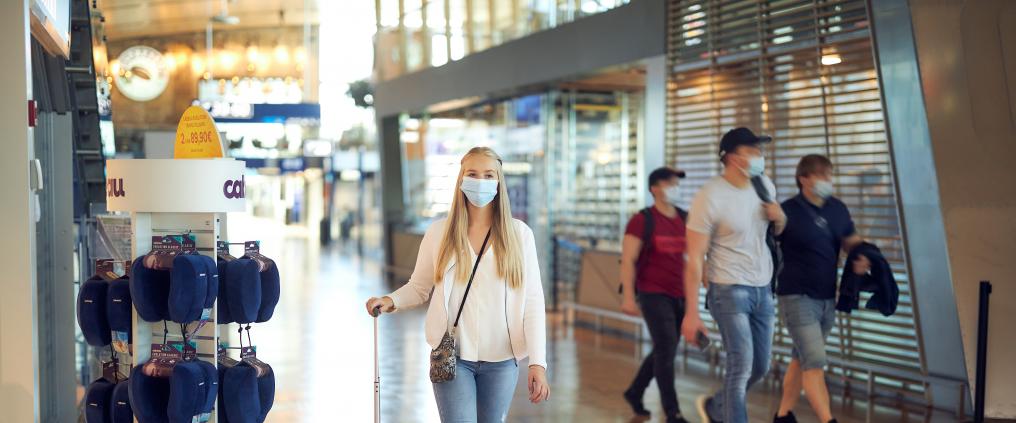The coronavirus (COVID-19) spread from Asia starting from the turn of the year and was declared a global pandemic in March, followed by a number of countries introducing restrictions on travel. According to the International Air Transport Association IATA, passenger volumes declined by 57.6% year-on-year during the period under review.
At Finavia’s airports, the coronavirus crisis caused a steep decline in passenger volumes starting from March. Passenger volumes were further reduced by the introduction of internal border controls in Finland in March. Most airlines cancelled flights due to the coronavirus and Finavia has closed some of its airports until flights resume. Finavia also made operational changes at Helsinki Airport, including the closure of certain terminal areas, services and one of the three runways. Travel restrictions were relaxed in Finland starting from 13 May 2020 to allow travel to a small number of European countries.
Passenger volumes decreased by -60.6% in January–June. The total number of passengers was 5.0 (12.8) million. The coronavirus crisis caused passenger numbers at Helsinki Airport to plummet starting from the beginning of April. The airport’s passenger volume in April–June was 139,000, which was only 2.4% of the corresponding figure in the previous year. The passenger volume of Helsinki Airport declined by -62.4% during the period. The total number of passengers was 4.0 million. Altogether 1.0 million passengers travelled through the regional network airports, representing a decrease of -51.6%. The number of passengers at airports in Lapland decreased by -31.2% and amounted to 0.5 million.
The sharp decline in flights and passenger volumes had a significant negative impact on Finavia’s financial performance. Revenues for January–June 2020 decreased by 47.8% and amounted to EUR 102.1 (195.7) million. The operating margin before extraordinary items declined by 98.0% to EUR 1.4 (68.7) million. The operating profit before extraordinary items was EUR -48.0 (25.3) million.
To strengthen its financial position, Finavia started the most extensive adaptation programme in its history in March to implement cost cuts in operational activities and reduce investments. The company also temporarily laid off all of its personnel. In June, Finavia decided on new temporary layoffs that will begin in the autumn. Finavia continued to implement cost savings in personnel expenses as well as operational expenses. The decision was made to continue the strategic investment programmes at Helsinki Airport and the airports in Lapland, which are in their final stages, as the extension projects geared towards the needs of the coming decades will be necessary in the future
To prevent the spread of the virus, Finavia took up emergency management and made major changes in passenger and airport processes. Finavia ensured that cleaning and hygiene were enhanced and assisted passengers to ensure safe and smooth travel. The actions were based on orders issued by the health authorities and other authorities as well as Finavia’s own active approach.
The recovery of the aviation sector will require that the pandemic abates, travel restrictions are lifted and the supply and demand for flights recover. It is too early to issue an accurate estimate of the recovery from the crisis. In addition to travel restrictions and the supply and demand for air traffic, global economic development and the general recovery of society will also affect how long the recovery of travel will take.



